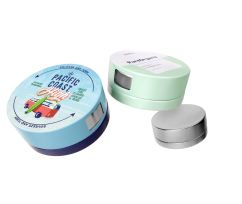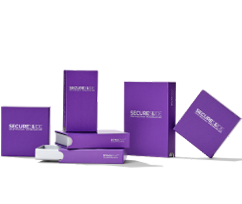Vitamin Packaging in 2022: A General Overview
The vitamin market reaches new heights every year, as consumers look to boost their health and longevity with more potent and personalized products.
Established companies lead the charge in market growth. Yet, much of the new interest in vitamins comes from smaller boutique operations creating unique formulations and gaining niche followings online.
While the products have life-changing potential, many of these small businesses struggle with packaging.
What are the best practices for packaging vitamins safely and effectively in 2022? How can you make a product stand out in an increasingly competitive space?
Let’s explore the world of vitamin packaging in 2022 and find out what it takes to package products for maximum efficacy and commercial success.
How Has Vitamin Packaging Changed?
The vitamin industry has undergone drastic changes in the 21st century. Packaging, however, is the most visible evolution. Let’s take a look at vitamin packaging improvements and what manufacturers can do to stay on top of current trends.
Sustainability
Consumers are serious about sustainability. Factor in a health-conscious industry like vitamins and supplements and sustainability becomes even more important. People who care about their bodies often also care about the earth — and will spend accordingly.
That’s one great reason why vitamin makers should turn to eco-friendly packaging technology. They can bring their products to market and position themselves for better customer perception.
Dymapak is ahead of the curve with Secure Sack Eco. It’s the first recyclable child-resistant pouch with lab certification and the safety assurance you need for optimal packaging.
Child-Resistant Packaging
The right vitamins can do wonders for the human body when dosed properly. Unfortunately, they are dangerous to children who gain access to packages and accidentally consume them.
Gummies and sweet tablets are even more tempting, especially when labels include intriguing color schemes.
To prevent a worst-case scenario, more parents are thinking twice about the types of packaging they pick up off the shelves for products like medicine, household goods, and vitamins. Even standard twist-top bottles are not always child-resistant. Greater measures must be introduced to help keep children safe.
In short, parents want a package that they can access, but that proves a lot harder for children to get their hands into.
Dymapak offers top-rated, lab-certified child-resistant bags, giving vitamin producers and consumers that extra peace of mind they need to keep vitamins in the house — even with curious kids present.
Shelf Life
It’s simple math that every vitamin company needs to run before a launch: how long can a product last in storage or on store shelves, and how does this impact the bottom line?
Customer satisfaction demands a product that not only works as advertised but must survive the necessary duration of a supplement dosing cycle, which can range anywhere from 30 to 90 days. Add in shipping time and retail shelf time, and the right kind of packaging becomes even more important.
This makes shelf life a non-negotiable factor when formulating products but also choosing the right packaging system for distribution. Barrier properties such as low oxygen and vapor transmission rates are crucial here. These attributes preserve the integrity of products and help boost customer retention long-term.
NFCs or Near-Field Communication
Smart packaging is the next big thing. Forward-thinking vitamin companies already embrace NFC technology and are fast transforming the user experience with ambitious projects.
These near-field communication codes can unlock a world of opportunity for the supplement space. NFCs could better allow customers a way to get more mileage out of products with comprehensive information, personalized user experiences, and more interactive elements that could help increase engagement.
Just by scanning a code embedded in a package, customers can also access new ways to buy and subscribe to products, introducing limitless upside for business growth.
It makes sense that as health becomes more digitized and automated with wearables and apps, leaders in the supplement industry will be pushing the limits of packaging technology as a part of this high-tech ecosystem. This trend isn’t going anywhere, so the time to get on board is now.
Flexible Packaging
Traditionally, vitamins have been packaged in non-flexible bottles, jars, and tins, with no complaints from loyal consumers. But nowadays, brands see the benefits of flexible packaging for multiple reasons, from cost-effectiveness to environmental friendliness, and even greater shelf appeal.
We won’t see the switch to flexible packaging take place overnight, as not every company understands the needs of their customers.
However, you should expect to see more flexible packaging options come to the forefront as vitamin makers explore various ways to stand out from the crowd, potentially reduce their bottom line, and benefit their business reputation overall.
Don’t misinterpret flexible packaging as being weaker or less secure. In fact, modern child-resistant bags offer comparable or superior protection. Barrier properties like light blocking and impermeability are among the best available.
Package Customization
As vitamins become more customized in their formulations and functions, so do the packages in which they’re shipped and stored. A vitamin product with generic, uninspired packaging is bound to fail. Consumers expect more from their products (and that goes hand-in-hand with the packaging).
Package customization is truly a “make-or-break” opportunity for vitamin producers, offering the chance to outpace competitors with originality or fall prey to the status quo.
The aspects of customization include everything from color and size to unique laminate materials, inserts and compartments, and plenty of finishes to choose from. Foil, kraft, glossy, matte – vitamin makers should have their pick. Fortunately, Dymapak delivers plenty of options to meet any need.
Transparency
Clear labeling isn’t just a smart way of doing business in the vitamin industry; it’s also key to protecting yourself as a producer when it comes to following rules and regulations.
The FDA is upfront about what they expect in terms of vitamin labels. It’s not worth risking dire consequences by trying to work around the law. These guidelines are meant to protect the company and the consumer.
Dietary supplement labeling guides offer special considerations. Packaging requirements include specific package placement and information. This information helps consumers make an educated decision regarding their potential purchase to help keep them safe.
The best package providers ensure that every printed product meets rigorous standards before an order is fulfilled. This occurs in the form of a proof. A company can use the proof to get an idea of how their product will look and to check for any typos or other errors.
What Will Vitamin Packaging Look Like in the Future?
We’ve watched vitamin packaging transform drastically in just a decade or two, so what can we expect moving forward?
The area of most rapid change will be sustainability, notably the standards that packaging must meet with increased pressure from consumers and regulatory agencies. Recyclable packages won’t be a “nice-to-have” but a necessity, as more consumers reflect on their current environmental impact.
Eco-friendly packages are already here — and will continue to improve thanks to their flexibility, ease of use, child-resistant capabilities, and consumer demand.
Moreover, companies and customers want options with how vitamins are packaged and stored. Flexible packaging, secure recyclable tins, and more traditional constructions should be readily available and customized.
The Bottom Line
There’s no ceiling in sight for the vitamin industry as competition and volume ramp-up. Products will increase in quality and cost-effectiveness, but smartly-designed packaging is where many small brands can gain a potential competitive edge over more established producers.
Use this guide to get a leg-up on vitamin packaging best practices and stay on top of trends as they emerge.
Sources:
Vitamin Packaging Designs | 99Designs


